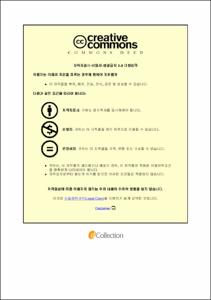남해 반폐쇄성 연안에서 식물플랑크톤과 박테리아 군집의 관계
- Abstract
- The phycosphere refers to the coexistence of bacteria by consuming organic matter or products in the vicinity phytoplankton, and has an important effect on microbial cycles and biogeochemical cycles in marine ecosystems. Recently, there is an increasing research on the relationship between phytoplankton and bacteria communities. To investigate a relationship between phytoplankton and bacteria communities, we conducted weekly monitoring for 51 samples (June 2016 to June 2017), In this study, phytoplankton and bacteria communities appeared in 6 groups mainly in phytoplankton community. The first group (July-September 2016), diatoms Skeletonema marinoi-dohrnii complex, Pseudo-nitzschia delicatissima, Chaetoceros curvisetus, Ch. Costatus was the main species. Water temperature lasted for more than 10 days at 28℃ or higher in August, and low concentrations of nutrients (especially dissolved silica) were observed. The bacteria community showed high α-proteobacteria (Cribrihabitans marinus). However, Actinobacteria and γ-proteobacteria increased after mid-September when phytoplankton community decreased. In the second group (October 2016), the abundance of phytoplankton was low due to the influence of Typhoon Chaba. Salinity fell to below 29, and nutrients were increased by rainfall and other supply. Bacteria were similar to those in the July-September period. In the third group (from November to mid-December), Akashiwo sanguinea red tide occurred up to 3,200 cells mL-1. The red tide decreased as the water temperature dropped below 16℃ (Nov. 28). Dissolved inorganic phosphorus and Dissolved organic carbon by extracellular polymeric substances from red tide organisms are very similar to those of Akashiwo sanguinea. α-proteobacteria (Rickettsia rhipicephali), Flavobacterials (Polaribacter marinivivus, Tenacibaculum aiptasiae) in the bacteria community were very similar to those of red tide. The fourth group (from mid-December to January 2017) was Cryptomonas sp. and S. marinoi-dohrnii complex were dominant. At this time, the concentration of dissolved silica decreased due to the increase of diatoms. Bacteria community wes mainly α-proteobacteria (in particular, Planktomarina temperata). The fifth group (February to March 2017) is the major species in the low water temperature and low nutrient environment following diatoms P. delicatissima (August to September 2016) and the major bacteria community are α-proteobacteria (Amylibacter ulvae). Sixth group (April to June 2017) Diatoms Ch. Curvisetus and P. delicatissima were the main species, and the proportion of Amylibacter ulvae species decreased and that of Planktomarina temperata species increased in α-proteobacteria. During one year, phytoplankton in the semi-closed bay was observed to have fluctuated in summer-autumn (diatoms), autumn- winter (dinoflagellates), winter (cryptomonas, diatoms) and spring (diatoms). Bacteria community mainly showed α-proteobacteria and increased γ-proteobacteria upon the increase of organic matter (phytoplankton). In addition, species-specific relationship between phytoplankton and bacteria was shown.
- Issued Date
- 2019
- Awarded Date
- 2019. 8
- Type
- Dissertation
- Publisher
- 부경대학교
- Affiliation
- 부경대학교 대학원
- Department
- 대학원 해양학과
- Advisor
- 오석진
- Table Of Contents
- 1. 서론 1
2. 재료 및 방법 4
2-1. 조사지역 4
2-2. 현장조사 6
2-2-1. 수환경요인 및 시료채집 6
2-2-2. 식물플랑크톤 종조성 6
2-2-3. 클로로필-a 6
2-2-4. 영양염류 7
2-2-5. 용존유기탄소 7
2-2-6. 박테리아 총 개체수 및 Metagenomic Next Generation Sequencing 8
3. 결과 10
3-1. 환경요인 10
3-1-1. 수온 10
3-1-2. 염분 10
3-1-3. pH와 용존산소 11
3-1-4. 영양염류 11
3-1-5. 용존유기탄소 12
3-2. 식물플랑크톤 군집 14
3-2-1. 식물플랑크톤 개체수 14
3-2-2. 식물플랑크톤 종조성 및 우점율 16
3-3. 박테리아 군집 19
3-3-1. 박테리아 총 개체수의 변화(DAPI) 19
3-3-2. 연간 박테리아 군집(Metagenomic) 19
3-4. 식물플랑크톤 및 박테리아 군집의 커플링 24
3-4-1. 식물플랑크톤 박테리아 군집의 클러스터 분석 24
3-4-2. 환경요인과 식물플랑크톤 및 박테리아 군집 관계 27
4. 고찰 38
4-1. 식물플랑크톤 및 박테리아 군집의 상관관계 38
4-2. 2010년 장목만 식물플랑크톤 군집과의 비교 44
4-3. 2010년 장목만 박테리아 군집과의 비교 49
5. 결론 52
6. 감사의 글 54
7. 참고문헌 55
- Degree
- Master
- Files in This Item:
-
-
Download
 남해 반폐쇄성 연안에서 식물플랑크톤과 박테리아 군집의 관계.pdf
기타 데이터 / 6.18 MB / Adobe PDF
남해 반폐쇄성 연안에서 식물플랑크톤과 박테리아 군집의 관계.pdf
기타 데이터 / 6.18 MB / Adobe PDF
-
Items in Repository are protected by copyright, with all rights reserved, unless otherwise indicated.